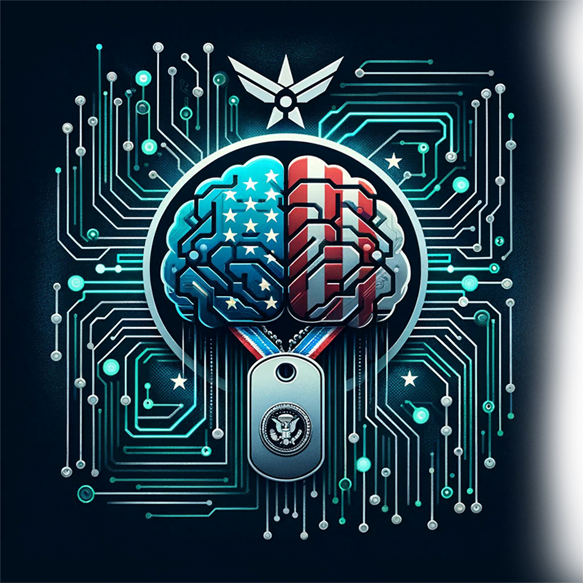
How to Avoid Building a Monolith with Microservices
In the present world, most software developers work on developing software applications with microservices architecture while avoiding the monolithic architecture or the traditional model that can be used to develop a software application. A software application with a monolithic architecture has all components merged. In other words, all the components should be present as a single unit for a software application with a monolithic architecture to work successfully.
However, unlike a monolithic application, the components of a software application with a microservice architecture are not dependent on each other. The microservice architecture allows the creation of small independent components that carry out a process or functionality of the application as a separate service.
So when we start to develop a software application with microservices, we have to make sure that we do not end up with a monolithic application with microservices. In this article, let us have a look at how to avoid building a monolith with microservices.
A solid macro architecture framework
When the allowed technologies are limited
One of the most reliable ways to keep away from building a monolith with microservices is by maintaining a solid macro architecture framework. We might end up developing a monolith if the technologies allowed by the company are limited. But with the macro architecture framework, we can outline the programming languages, frameworks, and infrastructure consistently for each microservice.
When the database integration with microservices is complex
Similarly, the possibility of a developed application being a monolithic application is high when there is no necessity for multiple databases. The macro architecture framework allows specific microservices to make use of the domain model in the database schema. But this does not mean that a set of microservices will use the same database schema.
Cloud Computing Technologies AI

Transforming for Innovation, Sustainability and Security
Transforming for Innovation and Sustainability securing future competitive advantage
When a uniform user interface is required
Furthermore, when there is a necessity of developing a uniform UI, we might end up creating a monolithic application. Shared CSS and JavaScript are not sufficient to guarantee a common style for the UI which is connected to many microservices as the uniform technical artifacts can be utilized to develop various types of user interfaces. This can be avoided by creating and using a style guide for the macro architecture framework.
When the application works as a coherent system
Most developers tend to implement applications with monolithic architecture when they are viewed from the angle of a coherent system. This situation can be eliminated when a solid macro architecture framework is followed. Following is a list of ways how the macro architecture assists us to eliminate the discussed issue.
- The coherent nature of an application arises in scenarios such as when each microservice provides a uniform interface and when different formats are used for communication. Using the communication protocol for a macro architecture framework assists us to manage and control these scenarios.
- The macro architecture helps the developers with the authentication process, allowing the authentication of a user to be used for all the microservices through a single authentication operation. Authenticating a user for each microservice separately is not acceptable.
- With the macro architecture, we can test all the microservices together after outlining the required prerequisites for testing.
Flexible and solid microservices architecture
The capability of the microservices architecture to avoid dependencies.
A software application will fall into the monolithic system category if the core services are dependent on each other. In such cases, the dependencies will pop up as method calls. But, if an application follows a flexible and solid microservice architecture, we can model each service as a unique unit that covers a particular functionality or set of functionalities. As a consequence, we can ensure that the microservices operate on their own.
The ability of the microservices architecture to allow scaling
Horizontal scaling
We can horizontally scale our applications with microservices architecture, without any usage of hardware components. This can be achieved through the addition of extra application instances inside a cloud service, Virtual Machines with the application installed, or more containers. If we are using Virtual Machines, it is not necessary to increase their sizes. By simply increasing the number of Virtual Machines, we can get an increased amount of computer power. The usage of the instances arises when a microservice becomes a performance bottleneck.
Vertical scaling
With the improvements to a software application, we might end up at a point where the cluster of the application does not have sufficient memory to execute the application. The applications with microservices architecture can be scaled vertically by increasing the hardware capacity. In other words, we can add more CPU, memory, and disk IOPS without making any change to the architecture and the infrastructure of the software application.
Usability of the Domain-driven design for microservices architecture
Domain-driven design (DDD) is a required framework/tool to be used when designing microservices as the microservices architecture framework consists of a particular bounded context and configurations. Domain-driven design provides a set of concepts, guidelines, and patterns that assist to design software applications concerning the fundamental business domain model. In other words, it shows us how we can solve the problems and fulfill the business requirements through code. Microservice design acquires these concepts and principles to implement unique modular systems that can operate and function on their own without any dependency.
Conclusion to Avoid Building a Monolith with Microservices
Making use of microservices to develop a software application demonstrates that they are implemented using loosely coupling services. If a software application is developed on top of the microservices architecture, it ends up with various small services. Each service stands for a specific business goal or a requirement and all the services are combined as a whole application.
To sum up, everything that has been discussed so far, we need to make sure that we do not end up implementing a monolithic application once we start implementing an application on the microservice architecture. To achieve that, we can use a solid macro architecture framework and ensure that the microservices architecture used for the implementation of the application is flexible and solid to avoid building a monolith with microservices.
Generative AI Software Integration
Boost your business efficiency with our custom Generative AI Business Software, tailored for HR, finance, sales, event management, and customer service. Leveraging advanced natural language processing and AI-driven data science, we specialize in customer segmentation, sales analysis, and lead scoring. Elevate your operations and gain a competitive advantage with our precision-driven AI solutions. Contact us to integrate AI seamlessly into your key systems and transform your business.
What clients say about Cloud Computing Technologies
★★★★★ Rated 5 out of 5
"CCT's diverse skills and expertise has reduced our technical debt by millions of dollars to which we have reinvested into future capabilities."

Mrs. Hanson
★★★★★ Rated 5 out of 5
"With CCT migrating our critical systems into the AWS, 80% our staff is now remote working."

Mrs. Miller
★★★★★ Rated 5 out of 5
"CCT showed us how to meeting regulatory compliance in AWS Landing Zone and greatly improved our cloud security controls."

Mrs. Wilson
★★★★★ Rated 5 out of 5
"CCT provided our agency with application rationalization services and successfuly applicaton migrations meeting all KPIs and SLAs."

Federal Agency
★★★★★ Rated 5 out of 5
"I highly recommend the data science team at CCT. They are technically proficient, great communicators, unbiased, and reduced our false positives by 68%."

Mr. Brown
★★★★★ Rated 5 out of 5
"The team at CCT is knowledgable and insightful in developing a cloud architecture leading to our mission success."

Mr. Robinson
Experience and Agile Expertise
you can trust
Years in business
20
Contracts Awarded
180
+
Further information about Avoid Building a Monolith with Microservices.
Frequently Asked Questions
A monolithic architecture refers to a single, unified software application where all components are interconnected and interdependent. While simple to deploy initially, it becomes challenging to scale and maintain as the application grows. Adopting microservices instead allows for modular, independent development of each component, resulting in easier management, improved scalability, and faster deployment cycles.
Cloud Computing Technologies AI specializes in breaking down complex monolithic systems into manageable and efficient microservices. We assess your current architecture, identify logical service boundaries, and systematically decompose your application, ensuring each microservice is standalone and loosely coupled, enhancing scalability and fault isolation.
Common pitfalls include overdependence on a shared database, inadequate service encapsulation, and overly complex communication patterns among services. Such issues can negate the benefits of microservices by creating tight couplings and dependencies, thus steering the architecture back towards a monolith.
Absolutely. We champion practices like Domain-Driven Design (DDD) to help define bounded contexts clearly, utilize APIs for inter-service communication, and advocate for dedicated data management for each service. This approach ensures that microservices remain autonomous and manageable.
Team structure is crucial. We recommend organizing teams around business capabilities, where each team owns a specific set of microservices relevant to their domain. This method, often referred to as the Conway’s Law approach, aligns architectural boundaries with team structures, promoting more focused and independent service development.
DevOps practices are vital in a microservice architecture as they support continuous integration and delivery, enabling services to be deployed independently and frequently. Cloud Computing Technologies AI’s DevOps solutions provide automation, monitoring, and proactive management tools that facilitate a robust microservices environment, ensuring operational efficiency and resilience.
Your first step is to schedule a consultation with our team. Contact us at (800) 804-9726 or fill out our contact form below. We will conduct a thorough review of your existing system architecture, discuss your specific needs, and outline a strategic plan to transition to a microservices architecture that avoids the pitfalls of a monolithic design.






